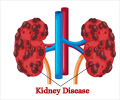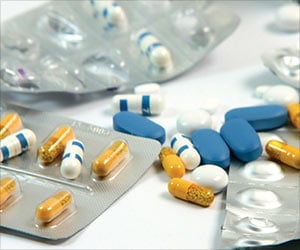Clinicians were asked by the FDA to be more conservative when they prescribe chronic kidney disease (CKD) patients with drugs

The new federal recommendations apply to erythropoiesis-stimulating agents (ESAs). Patients with CKD may need these drugs if they lose the ability to make red blood cells and become anemic, which can make them tired, weak, and short of breath. ESAs treat certain types of anemia by stimulating red blood cell production and decreasing the need for blood transfusions. Drugs in the ESA class are epoetin alfa (marketed as Epogen and Procrit) and darbepoetin alfa (marketed as Aranesp).
Clinical trials have shown that ESAs can increase the risk of patients developing heart-related problems such as strokes and heart attacks when used to intentionally increase hemoglobin (a red blood cell component) above 13 g/dL. Because of this, the new ESA label now states that clinicians should consider starting ESA treatment when a CKD patient's hemoglobin is less than 10 g/dL, and they should individualize dosing and use the lowest dose of ESA to reduce patients' need for blood transfusions. In addition, if a dialysis patient's hemoglobin level approaches or exceeds 11 g/dL (10 g/dL for a CKD patient not on dialysis), clinicians should reduce or hold the dose of ESA. (The drug label previously recommended that ESAs be dosed to achieve and maintain hemoglobin levels within a target range of 10 to 12 g/dL in CKD patients. This target range concept has been removed from the label.)
A commentary by Braden Manns, MD (University of Calgary, in Alberta, Canada) and Marcello Tonelli, MD (University of Alberta, Canada) suggests that the new guidance is not completely consistent with the evidence and that some of the guidance may prove difficult for physicians to apply in practice. "The recent FDA labeling update seems balanced, although more specific guidance to clinicians would have been helpful," the authors wrote. They suggest that instead of recommending that physicians individualize ESA dosing and reduce it when hemoglobin exceeds 11 g/dL in dialysis patients (10 g/L in non-dialysis CKD patients), perhaps the FDA should simply have recommended targeting hemoglobin ranges of 9 to 11 g/dL in dialysis patients and 9 to 10 g/dL in non-dialysis patients.
In a second commentary, Alan Kliger, MD, Fredric Finkelstein, MD (Hospital of St. Raphael and Yale University), and Steven Fishbane, MD (Hofstra North Shore-LIJ School of Medicine) take a different angle and propose that treatments for anemia should focus on the individual needs of each patient, weighing the risks and benefits in each case. While it is important to minimize patients' chances of developing heart-related problems, it is also important for patients to feel less tired, have more energy and vitality, and be better able to function physically. "Instead of simply targeting hemoglobin levels, we should be looking at the hemoglobin level in the context of the patients' perception of their quality of life and use ESAs judiciously to improve these perceptions," the authors wrote. In other words, at what hemoglobin level do anemia-related symptoms become less burdensome for each individual patient? With this information in hand, physicians and patients will be better able to balance the risks versus the benefits of treatment.
Advertisement















